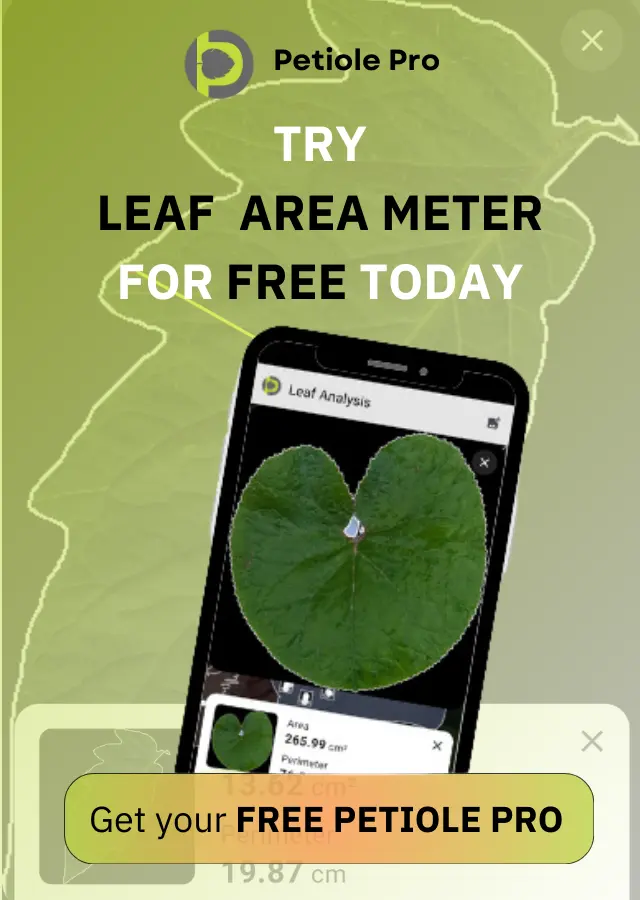How to make curly plant leaves flat


The task to make plant leaves flat for leaf area index measurement makes many researchers unhappy. Have you tried to measure the plant leaf area index of wheat? Or rice? Perhaps, soybean? How to make the headache with this task less? Simple answers to a really difficult practical question in agriculture and ecology. Surely, with Petiole.
Why Do You Need to Make Plant Leaves Flat?
Have you ever tried to measure leaf area index of wheat, soybean, strawberry or pear? If the answer is “yes”, then you definitely understand the problem. If your answer is “not yet”, then be ready to do this one day.
The natural specifics of these leaves make them impossible to stick to the surface for measurement. In other words, each time you will try to keep it nicely flat, it will return to its natural shape.
However, to make plant leaves flat is important for the precision of data. If you won’t care about the accuracy of collected data about leaf area index measurement then your agriculture science research may fail.
It doesn’t matter too much are you comparing data or just processing it. But inaccurate data about plant leaves should not be the foundation for any scientific outcomes.
Unfortunately, if not to make plant leaves flat before any measurement using optical and digital tools, then the risk to get wrong data is higher.
In any case, it will be useful for you to know how to make the surface of leaves flat and not curvy. Considering our hands-on experience, it is almost impossible particularly in wheat and rice, on the early stage of vegetation!
Methods How to Make Plant Leaves Flat
a) Glue and Cellar Tape
The most popular practical method is to use glue or cellar tape to stick the leaves. However, there are at least two problems with this methods.
Firstly, after such manipulations, the leaves are not acceptable for any other further measurements or research.
Secondly, this method is applicable only for destructive methods. In other words, it produces more waste of leaves.
Hence, if you need to monitor the same plant (and its leaves) all the time, then this method is not the best one.
b) Blue Tack (or White Tack)
In brief, many people successfully use Blue Tack (or White Tack) to make plant leaf flat. Indeed, it has good results. However, this method requires time and efforts. Not too much. However, you will still spend at least one minute to prepare a leaf for measurement.
c) Sticky Surface
We found that one of the innovative ways how to improve the process of leaf area index measurement is to apply different techniques. Hence, to make a plant leaf flat it is possible to use a sticky surface. For example, you can use this one as we can confirm: it works.
What are the main benefits?
- It sticks to most popular surfaces and dashboards
- The surface holds any leaf and keeps it flat
- You do not need to youse any magnet or adhesive
- This sticky surface does not leave any residue or footprint
How to make plant leaves flat for leaf area measurement? How to make a surface of a leaf flat for leaf area index measurement? Sticky surface knows how
Hence, we believe in this elegant solution to this problem. It is applicable for almost any type of leaves (cereals, fruit or vegetables). As of now, we just can’t suggest leaves, which are not good for this methods.
Conclusions
The task to make plant leaves flat is important to get precise and accurate measurements of the leaves.
Old-school methods to use glue and cellar type is still popular. But more innovative ideas are winning now.
The Blue Tack, as well as sticky surface, makes the leaf completely flat and ready-to-measure. Both methods are applicable in non-destructive and destructive practice.
If you have any other ideas about this topic – we will be very glad to hear them. Let us know, please.

